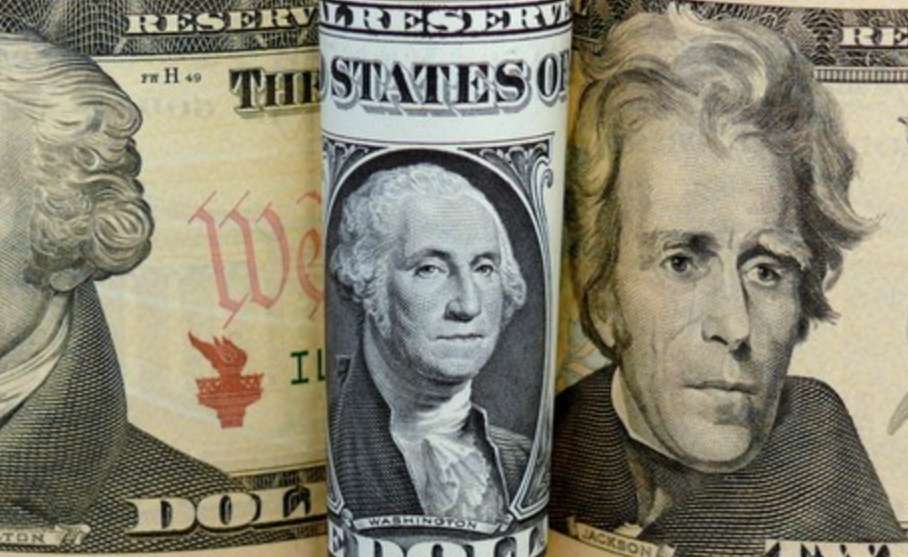The Dollar is Set to Rise at Least 5% in the Coming Year.
Advertisements
The recent surge in the U.S. dollar's strength has raised eyebrows across global financial markets, particularly after the release of favorable non-farm payroll data for January 2025. A noteworthy milestone was achieved as the dollar index surpassed 110 for the first time since November 2022, reflecting a nearly 3.7% increase over the past month. This bullish trend significantly impacts various currencies, especially the euro, which slipped 0.6% against the dollar, hitting an intraday low of 1.0178.
In light of these developments, financial giant Goldman Sachs upgraded its dollar forecasts, with strategists, including Kamakshya Trivedi, predicting an approximate 5% rise over the coming year. This adjustment is attributed largely to the anticipated implementation of new tariffs and the robust performance of the U.S. economy. Notably, this forecast marks Goldman’s second upgrade for the dollar within two months, signaling a shift in the economic landscape that analysts had previously underestimated.
Goldman Sachs highlighted the dual forces of ongoing economic resilience in the U.S. and the prospect of new tariffs proposed by former President Trump, which could lead to inflationary pressures and hinder the Federal Reserve's ability to adopt a more relaxed monetary policy stance. Meanwhile, the firm also lowered its expectations for the euro, projecting it could dip below parity with the dollar within six months, falling to a suggested rate of 0.97.
The non-farm payroll data released last Friday underlined the buoyancy of the U.S. labor market, further solidifying the market's confidence in the dollar's prospects against various currencies, including the euro and the Aussie dollar. According to Goldman, the euro is now hovering around the parity mark, a level it has not seen since 2022, with the latest trading registered at 1.0225 dollars.
In an even broader context, Goldman also revised its six-month forecast for the British pound, reducing it to 1.22 from an earlier prediction of 1.32. Recent trading sessions saw the pound weaken by 0.7% to 1.2126, marking a new low for the currency since November 2023, before rebounding slightly to 1.2151 in further trades.
The Australian dollar faced pressure as well, with Goldman predicting it would fall to 0.62 within three months, down from a prior outlook of 0.66. This change has been echoed in the market, where the Australian dollar has slid into the vicinity of 0.61.
The dollar's strength is particularly palpable in the Asian currency markets, where it rose by at least 0.5% against both the Indonesian rupiah and the Philippine peso, while the Indian rupee plummeted to historical lows. This trend emphasizes how the emission of strength from the dollar is not just limited to its performance against major Western currencies but extends throughout the global financial ecosystem.
As Goldman Sachs highlighted, its previous forecasts were based on the expectation of a shift to a more accommodative Federal Reserve policy back in September; however, it underestimated the market dynamics, leading to the dollar’s resurgence. Since the low in September, the dollar index has rebounded over 8%, showcasing the volatility and rapid changes often seen in foreign exchange markets.

It is important to mention that Goldman’s predictions surrounding the USD/JPY pair in March were notably accurate, totaling the currency pair at approximately 155 within three months. The actual trading range experienced fluctuations between 154 and 161 by June, demonstrating that their forecasts can frequently reflect actual market movements.
Data has indicated a rally in optimistic sentiment towards the dollar, with investors, including hedge funds, backing this trend. Currently, positions betting on a stronger dollar have reached their highest levels since January 2019, emphasizing the prevailing market sentiment favoring the greenback.
Although Goldman has raised its dollar forecasts, its strategists continue to suggest that the dollar may further strengthen. They noted that this potential could stem from the ongoing economic resilience despite the newly imposed tariffs, coupled with concerns that economies sensitive to interest rates might face greater impacts going forward. In their analysis, they stated, "While we acknowledge that FX market participants clearly expect some degree of policy changes concerning tariffs, and it is challenging to discern the drivers of recent price movements, we still believe that there is room for the dollar to strengthen further." This assertion suggests that even as market expectations adjust to the new tariff policies, the enduring strength of the U.S. economy and shifts in the global economic landscape might provide continued upward momentum for the dollar.
The strengthening of the dollar cannot solely be attributed to positive domestic economic growth and the newly proposed tariffs; it is also intertwined with broader global economic conditions, political influences, and fluctuating market expectations. As currencies such as the euro, the pound, and the Australian dollar face mounting pressure against a robust dollar, the Asian currency markets similarly experience varied impacts from these developments. For investors, keen attention to the dollar's trajectory, alongside global economic policy changes, will be crucial for effectively navigating the tumultuous currency market landscape and making informed adjustments to their asset allocations in response to these fluctuations.